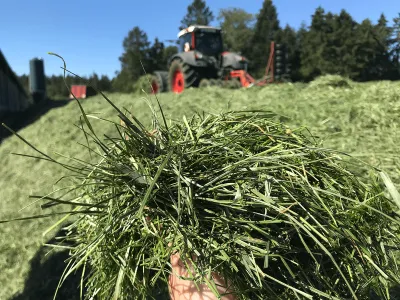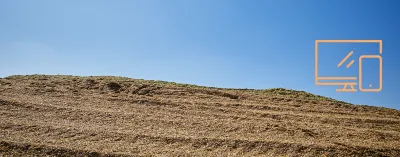BONSILAGE SPEED C – One of a kind
Aerobic stability and silage go hand in hand. When producers open their silage, they need to see a hygienic feed that remains aerobically stable.

We shortly introduced our latest innovation to the US: Lactobacillus diolivorans, a complete novelty in the US and unique lactic acid bacteria strain to be used as silage inoculant. It is included in our new BONSILAGE SPEED C, as already introduced in one of our last blog posts HERE.
We speed up fermentation.
Typically, producers can achieve silage with improved aerobic stability with the use of an inoculant containing a heterofermentative strain of Lactobacillus buchneri. However, one challenge with this inoculant is the fact that L. buchneri organisms take approximately 6-8 weeks to produce acetic acid, which aids in the improvement of aerobic stability and ripens silage. Typically, farmers will plan for carryover to overcome this timing challenge, however, it is not always feasible, and situations can arise where silage must be opened before the process is complete.
We introduce a new strain for faster aerobic stability.
Because producers need products that increase flexibility on their farms, the BONSILAGE R&D team developed a new strain for faster aerobic stability. Lactobacillus diolivorans is a unique and key microorganism in the formulation of BONSILAGE SPEED C, being the first inoculant worldwide that contains this unique strain. BONSILAGE SPEED C uses a combination of hetero- and homofermentative lactic acid bacteria of Lactobacillus diolivorans, Lactobacillus buchneri, and Pediococcus acidilactici.
This formulation slashes the silo ripening time down to 14 days, ensuring producers achieve high aerobic stability after a much shorter period of time.
Figure 1. The fermentation profile of high-moisture corn, HMC (~65% DM) ensiled for 28 days and either not treated
(Control) or treated (BS SPEED C). (Source: University of Wisconsin, 2020)
How does it work?
The unique metabolic pathways allow for the rapid production of acetic acid and other endproducts at the onset of silage fermentation. Other heterofermentative lactic acid bacteria like L. buchneri metabolize lactic acid to acetic acid and 1,2-propanediol. L. diolivorans can metabolize multiple substrates to produce multiple beneficial metabolites including acetic acid, propionate, 1-propanol, and a small amount of lactic acid. Rapid acidification takes place due to the ability of L. diolivorans to use carbohydrates such as glucose and fructose as substrates. High acetic acid formation at the beginning of fermentation gives the advantage of improved aerobic stability after a short period of ensiling.
The fermentation profiles shown in both Figures 1 and 2 illustrate the high amounts of acetic acid after short ensiling periods. Additionally, there is the production of propionic acid, further supporting aerobic stability.
Figure 2. The fermentation profile of corn silage (~33% DM) ensiled for 14 days. Material was either not treated (control)
or treated with BS SPEED C. (Source: ISF, 2021)
After many years of Research & Development and proven efficiency on European farms, this strain has proven to be highly beneficial for fast silage fermentation. Additionally, this strain is the first silage additive strain to be added to the GRAS-list in many years. BONSILAGE SPEED C is a strong example of the continuous efforts from the BONSILAGE team to continue to bring forth innovative and progressive solutions for silage management on farms around the world.


